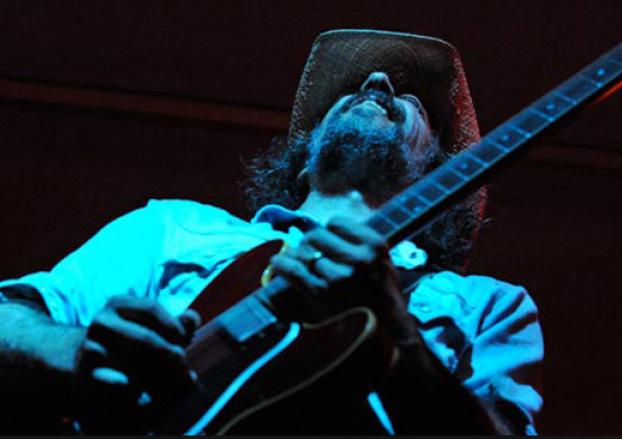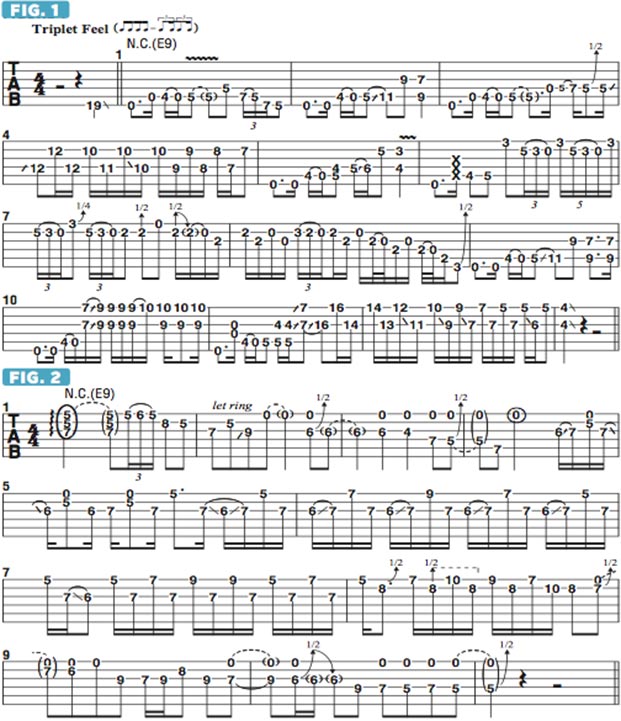Creative Approaches to Rhythm Guitar

As much as guitarists love to solo, the reality is that, for most of us, the majority of time spent in a band setting is applied to playing rhythm guitar.
While most serious guitarists have devised plenty of effective ways to practice and hone their soloing skills, the same cannot be said for the art of playing rhythm guitar. Focusing practice time on rhythm takes a different kind of discipline, which is why, unfortunately, one rarely hears someone say, “Wow, that guy’s an amazing rhythm player!” In my experience, time spent learning to improve one’s rhythm guitar chops reaps many different benefits, from solidifying your sense of time to instilling yourself as an integral part of the rhythm section.
In this column, I demonstrate two creative approaches to playing rhythm guitar–style accompaniment over a static one-chord funk groove in E. I use the term “rhythm guitar–style” because I take liberties with the concept by including sliding sixths, single-note melodic lines, allusions to other chords, rhythmic syncopations and more. These rhythm parts are played over a funk-style backing track with an implied tonality of E7 (or E9).
I encourage you to practice playing rhythm guitar over all kinds of backing tracks (these days there are zillions on YouTube), but you should also spend time practicing rhythm guitar just to a metronome, so that you’ll be able to focus on the tempo and the time alone, without the support of bass, drums and other instruments.
FIGURE 1 illustrates a 12-bar rhythm part that describes an E7 tonality by remaining rooted in the E Mixolydian mode (E F# G# A B C# D), which is nearly identical to the E major scale, the only difference being that the seventh scale degree is lowered, or “flatted,” from D#, the major seventh, to D, the minor, or “flat” seventh, so the 1-3-5-b7 chord tones are E-G#-B-D. If you expand the chord tones to the 9, 11 and 13, the additional notes are F#, A and C#.
In bar 1, across beats one and two, I set up a theme that’s repeated throughout the example. This theme kicks off bars 1–3, as well as bars, 6, 9 and 11. Stylistically, you’ll find similar rhythmic phrases in the funk standards “Standing on Shaky Ground” and “Bending Like a Willow Tree.” In bars 1, 3 and 6, I embellish the rhythm part with single-note lines based on the E minor pentatonic scale (E G A B D). In bars 2, 4 and 9–12, I use sliding sixths (pairs of notes on non-adjacent strings that are an interval of a sixth apart, diatonic to E Mixolydian). I like to take liberties with the sixths by incorporating chromaticism, as demonstrated in bars 4 and 10.
FIGURE 2 begins with an E7sus4 chord voicing, and the presence of the fourth, A, on top, inspired the move to the subsequent single-note line based on the E blues scale. In bars 2–5, I lean on the open high E string as a pedal tone while playing a melodic line on the A, D and G strings, moving in bar 8 to oblique bends (two-note figures in which one of the two strings is bent) and then a return to high-E pedal tone phrases at the end of the figure.
All the latest guitar news, interviews, lessons, reviews, deals and more, direct to your inbox!
Now that you have the idea, try devising your own inventive rhythm parts using these techniques and approaches.

Guitar World Associate Editor Andy Aledort is recognized worldwide for his vast contributions to guitar instruction, via his many best-selling instructional DVDs, transcription books and online lessons. Andy is a regular contributor to Guitar World and Truefire, and has toured with Dickey Betts of the Allman Brothers, as well as participating in several Jimi Hendrix Tribute Tours.

